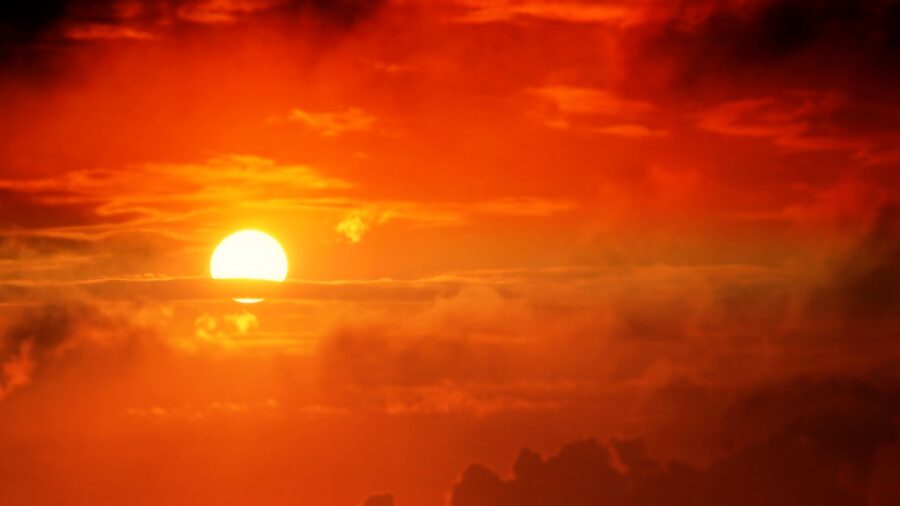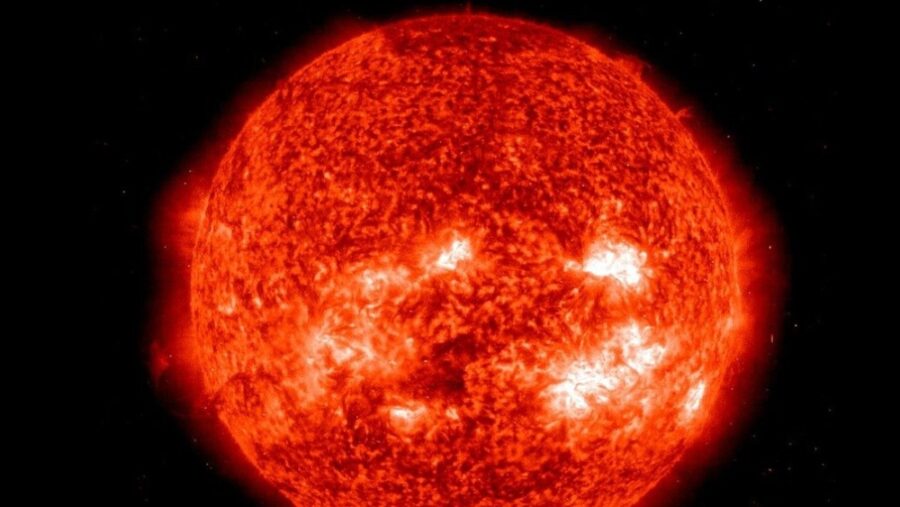The Sun Has A Massive Hole That Is Going To Blast Earth With Solar Winds
A coronal hole in the Sun will blast solar winds at Earth within the next few days.
This article is more than 2 years old

Since the dawn of human existence, people have been looking up at the sky for answers to questions about the universe and why we’re here. In the last few hundred years (a tiny blip in the grand scheme of time), we’ve developed technology to help us better see and understand what happens in the space beyond Earth’s atmosphere. It’s because of our commitment to studying the universe that has led scientists at NASA’s Solar Dynamics Observatory to discover a massive hole in the Sun that will soon blast Earth with solar winds.
According to Business Insider, scientists have discovered a gigantic black region of the Sun and determined that it is a coronal hole that will cause solar winds on Earth in a few days. But don’t be mistaken, even though the name suggests that the Sun has a giant hole in its side, it’s just a figure of speech. A coronal hole is an area of the Sun that is cooler than the rest of the giant ball of fire, so it doesn’t glow as bright and appears black to the naked eye.
Coronal holes that cause solar winds are common in stars, though they don’t usually occur as big as the one the Sun is currently sporting. According to Alex Young, the associate director for science at NASA Goddard’s Heliophysics Science Division, the current coronal hole is roughly 300,000 to 400,000 kilometers across, which is the equivalent of about 20-30 Earths lined up back to back. Young called the hole a “big one,” and he wasn’t kidding. That’s freaking huge.
Even though coronal holes are common and a part of the Sun’s normal activity, they’re not that well understood. Scott McIntosh, a solar physicist and the deputy director of the National Center for Atmospheric Research, called the holes “the ‘dark side’ of solar activity” because of how much we still have to learn about them and why they occur. What we do know is that these holes are the source of rapid solar winds.

Solar winds are the continuous flow of charged particles from the Sun that penetrates the solar system. They can reach speeds of 500-800 km per second, which by the NASA experts’ math, means that the solar winds will reach Earth by the end of the week.
When the Sun’s solar winds pass by Earth, the particles and magnetic field it carries will interact with our planet’s magnetic field, ringing Earth’s field like a bell. Don’t freak out, though. There is no cause for alarm as the solar winds are basically harmless. However, they will cause a more vibrant aurora borealis, making for a spectacular view for those near the Northern Lights this week.
When it comes to magnetic fields being ejected by the Sun, solar winds are amongst the most innocuous. It’s the more powerful magnetic fields like a coronal mass ejection that we need to worry about. These have been known to fry satellites and surge power grids, leading to electrical blackouts and disturbances in technology.
According to Young, our solar system is entering a new phase of solar activity where the Sun will start spitting out solar winds from coronal holes less frequently and increase the number of coronal mass ejections and solar flares that we experience. While this is concerning because of the effect these mass ejections can have on our satellites and technology, Young seemed less concerned and more eager, stating, “it’s gonna get more and more exciting and interesting.”












